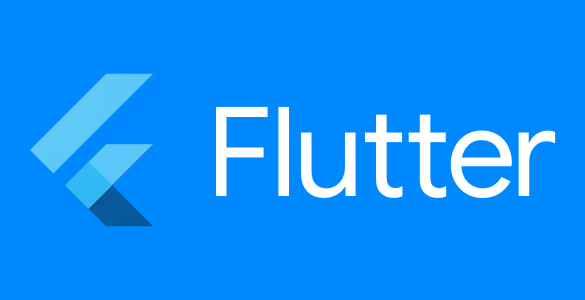
Boost Your Flutter App’s Performance in 5 Simple Steps
Boost Your Flutter App’s Performance in 5 Simple Steps!
In today’s competitive app market, a sluggish app is a dealbreaker. Users demand speed, responsiveness, and smooth experiences. If your Flutter app isn’t delivering, you risk losing users—and fast. The good news? Boosting your app’s performance doesn’t have to be complicated.
At Appcelly, we’ve helped countless businesses optimize their Flutter apps for success. In this guide, we’ll share five simple, actionable steps to improve your app’s performance and keep users coming back for more. Let’s dive in!
Step 1: Profile Your App to Identify Bottlenecks
Before you can fix performance issues, you need to know what’s causing them. This is where profiling tools come in.
Why Profiling Matters
Profiling your app is like running diagnostics on a car. It gives you a detailed view of how your app is performing, pinpointing where things are slowing down. Flutter provides excellent tools, such as:
- Flutter DevTools: Visualize rendering performance and frame timings.
- Performance Overlay: Identify dropped frames and rendering bottlenecks.
- Dart Observatory: Analyze memory usage and isolate leaks.
How to Get Started
- Use the Performance Overlay to monitor your app in real time.
- Enable DevTools to analyze CPU/GPU usage and memory allocation.
- Look for bottlenecks like unnecessary widget rebuilds or slow API calls.
Pro Tip: If you’re not sure how to interpret these metrics, our team can run a performance audit for you and provide a detailed optimization plan.
Step 2: Optimize Your Widget Tree and Build Methods
Flutter apps are all about widgets. But not all widgets are created equal, and how you structure your widget tree can make or break your app’s performance.
The Problem: Unnecessary Widget Rebuilds
In Flutter, widgets rebuild frequently. While this is normal, unnecessary rebuilds can slow down your app. For example:
- Deeply nested widget trees can cause cascading rebuilds.
- Not marking widgets as
constforces Flutter to recreate them unnecessarily.
Solutions for Optimizing Widget Trees
- Use
constWidgets: Whenever possible, declare widgets asconstto prevent them from rebuilding. - Refactor Large Widgets: Break down complex widgets into smaller, reusable components.
- Avoid Overusing Global Keys: Global keys can be performance-heavy; use them sparingly.
- Leverage
shouldRebuild: For custom widgets, override this method to rebuild only when needed.
By optimizing your widget tree, you ensure that your app’s UI updates efficiently, even on lower-end devices.
Step 3: Implement Lazy Loading for Large Data
Does your app handle large datasets or images? Loading everything at once can be a huge performance killer. Instead, lazy loading is your best friend.
What Is Lazy Loading?
Lazy loading means loading only the data or elements that the user needs at a given moment. This reduces memory usage and improves responsiveness.
How to Implement Lazy Loading in Flutter
- Use
ListView.builder: Perfect for rendering long lists efficiently. It only builds items when they’re visible. - Paginate API Calls: Instead of fetching all data upfront, load it page by page as users scroll.
- Cache Assets: Use packages like
cached_network_imageto save bandwidth and reduce load times.
Example: Lazy Loading with ListView.builder
ListView.builder(
itemCount: items.length,
itemBuilder: (context, index) {
return ListTile(
title: Text(items[index]),
);
},
);
Lazy loading doesn’t just improve performance—it enhances user experience by making your app feel faster and more responsive.
Step 4: Use Efficient Animations and Graphics
Animations and custom graphics can bring your app to life, but they can also strain performance if not implemented carefully.
The Problem: Overloading with Heavy Animations
While Flutter makes it easy to create animations, overloading your app with too many or poorly optimized animations can lead to jankiness or lag, especially on older devices.
How to Optimize Animations
- Use Lightweight Animation Widgets: Prefer widgets like
AnimatedContainerandAnimatedBuilderover manually managing animations with controllers. - Leverage GPU Acceleration: Use
CustomPaintersparingly and optimize draw calls. - Combine Animations: Use tools like
AnimationControllerto coordinate multiple animations instead of running them separately.
Example: Optimized Animation with AnimatedContainer
AnimatedContainer(
duration: Duration(seconds: 1),
curve: Curves.easeInOut,
color: isActive ? Colors.green : Colors.grey,
child: Text("Optimized Animation"),
);
Efficient animations don’t just look good—they run smoothly and keep users engaged.
Step 5: Minimize Your App’s Size
The size of your app matters more than you think. Large apps take longer to download, consume more storage, and can even turn users away.
Common Causes of Large App Sizes
- Unused dependencies
- High-resolution assets
- Debugging symbols left in the release build
Tips for Reducing App Size
- Remove Unused Code and Dependencies: Use tools like
flutter pub depsto identify and remove unused packages. - Compress Assets: Optimize images and icons using tools like TinyPNG or Flutter’s built-in asset compression.
- Enable Code Shrinking: Use ProGuard or R8 to strip out unnecessary code in the release build.
- Split APKs for Specific Devices: Create device-specific builds to reduce the download size for users.
Pro Tip: A smaller app size doesn’t mean cutting features—it’s about working smarter with your resources.
Conclusion
By following these five steps, you can dramatically boost the performance of your Flutter app. From profiling your app to lazy loading data and optimizing animations, each step ensures a smoother, faster, and more engaging experience for your users.
At Your App Development Company, we specialize in building high-performance Flutter apps that users love. Whether you’re starting from scratch or looking to optimize an existing app, we’re here to help.
Ready to take your Flutter app to the next level? Contact us today for a free consultation, and let’s build something amazing together!